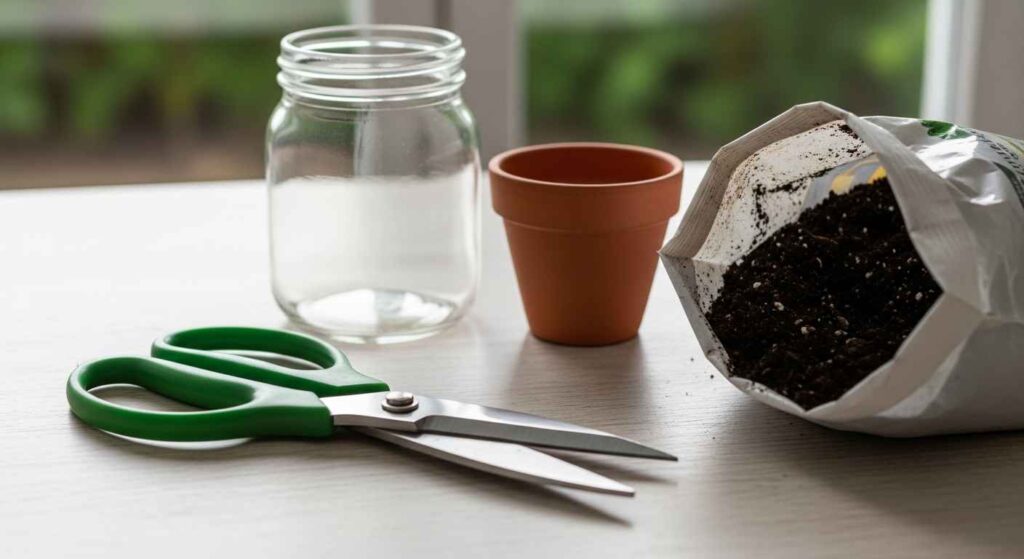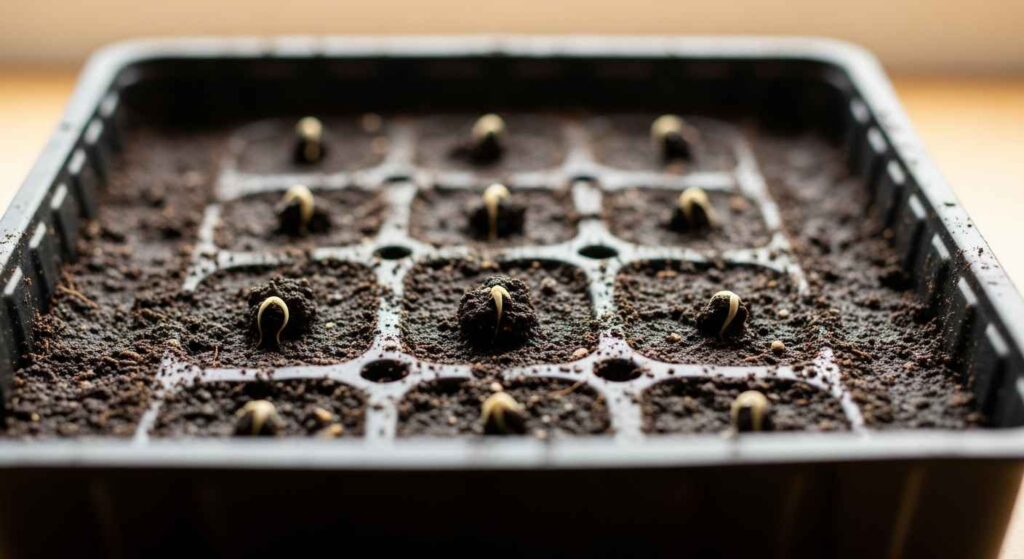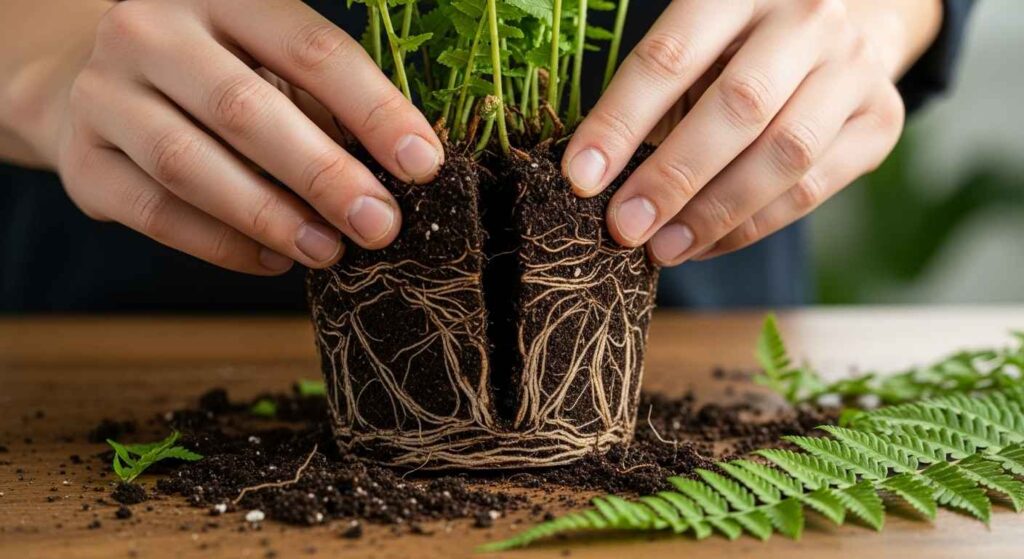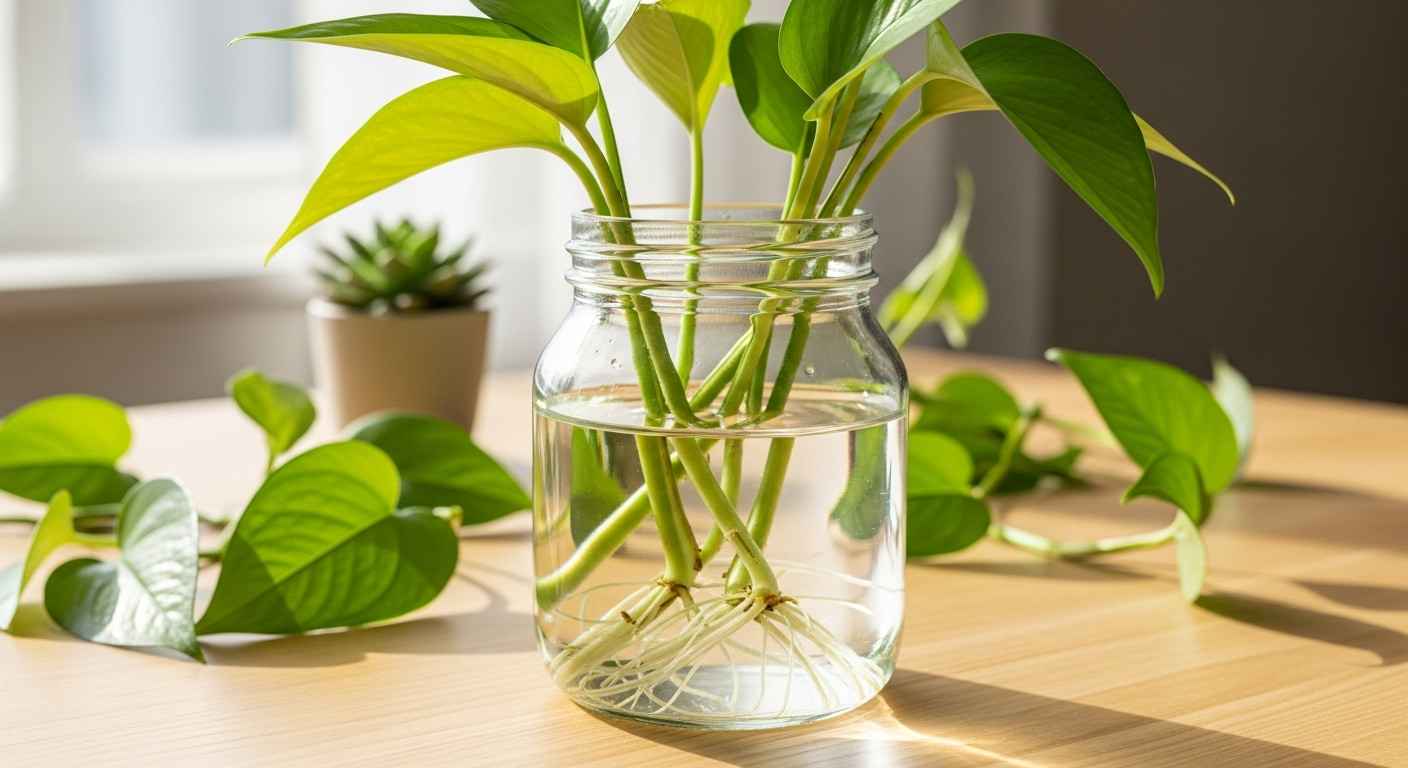Plant propagation lets you create new plants from ones you already have. It works for houseplants and garden varieties. This guide covers easy methods for beginners, So lets get started!
What Is Plant Propagation?
Propagation means making new plants. There are two types: sexual (using seeds) and asexual (using stems or leaves). Asexual methods copy the parent plant exactly. Seeds may produce plants with new traits. Beginners often prefer asexual methods because they’re faster and simpler.
Why Propagate Plants?
Propagation saves money by growing new plants for free. You can share them with friends, control plant size, or revive crowded ones. It’s also great for keeping plants healthy year-round. For seasonal care tips, see our winter plant care guide.
People Also Ask: Why is propagation good for plants? It promotes growth, prevents overcrowding, and lets you expand your collection without cost.
Tools You Need
Before starting, gather these: sharp scissors or pruners, glass jars for water rooting, well-draining potting mix, small pots, and optional rooting hormone. Sterilize tools with alcohol to prevent disease.

Top Plant Propagation Methods
Choose a method based on your plant type. Here are the easiest for beginners, drawn from sources like the Royal Horticultural Society and gardening blogs (checked September 2025).
Seed Propagation
Seeds are great for growing many plants, like vegetables or flowers. Use fresh seeds from reliable sources for best results (The Spruce, 2025).
Steps:
- Fill a tray with seed-starting mix.
- Plant seeds at the depth listed on the packet.
- Keep soil moist but not soggy.
- Place in indirect light at about 70°F.
- Transplant seedlings when they have true leaves (usually 2–3 weeks).
Tip: Spring is the best time for seeds. Germination takes 1–3 weeks.
Related Search: “How long do seeds take to sprout?” Most sprout in 7–21 days, depending on the plant.

Stem Cuttings
Stem cuttings work well for houseplants like pothos, philodendron, or monstera (Gardening Know How, 2025).
Steps:
- Cut a 4–6 inch stem below a node (the bump where leaves grow).
- Remove lower leaves to expose the node.
- Optional: Dip the cut end in rooting hormone.
- Place in water or moist soil.
- For water rooting, change water every 3–4 days.
- Roots appear in 2–4 weeks.
- Pot in soil when roots are 1 inch long.
Tip: Water rooting is easier for beginners, but soil gives stronger roots.
Common Mistake: Avoid direct sun—it can burn cuttings.
For plants that thrive in shade, check our low-light plants guide.

Leaf Cuttings
Leaf cuttings suit succulents, African violets, or snake plants (Better Homes & Gardens, 2025).
Steps:
- Cut a healthy leaf with a small stem piece.
- Let the cut end dry for 24 hours.
- Lay the leaf on soil or prop it upright.
- Keep soil lightly moist.
- New plantlets grow from the base in 3–6 weeks.
Tip: Avoid overwatering to prevent rot. Patience is key.
People Also Ask: Can all plants be propagated from leaves? No, only certain types like succulents or begonias work well.
Division
Division splits plants with multiple stems, like peace lilies or ferns (Fine Gardening, 2025).
Steps:
- Remove the plant from its pot.
- Gently separate roots into sections, each with roots and leaves.
- Plant each section in fresh, well-draining soil.
- Water thoroughly.
Tip: Divide in spring for best recovery. This method is great for overcrowded plants.
For organizing your gardening tools, see our mudroom organization ideas.

Layering
Layering roots a stem while it’s still attached to the parent plant. It suits shrubs like hydrangeas or climbers (Royal Horticultural Society, 2025).
Steps:
- Bend a low stem to the ground.
- Bury part of the stem in soil, leaving the tip exposed.
- Secure with a stone or pin.
- Roots form in 2–6 months.
- Cut from the parent and replant.
Advanced Option: Air layering uses damp moss wrapped in plastic around a stem. It’s great for woody plants.
Related Search: “What plants are best for layering?” Hydrangeas, roses, and ivy work well.
Common Mistakes to Avoid
- Overwatering: Causes rot. Keep soil damp, not soaked.
- Wrong Light: Too much sun burns cuttings; use indirect light.
- Dirty Tools: Sterilize to avoid disease.
- Impatience: Some methods take weeks. Don’t rush.
People Also Ask: What if my cuttings rot? Trim the rotten part, sterilize the tool, and try again in fresh water or soil.
Tips for Better Results
- Propagate in spring or summer for faster growth (The Spruce, 2025).
- Use a plastic cover to trap humidity for soil cuttings.
- Label plants to track progress.
- Check parent plants for pests before cutting.
For outdoor propagation, pair new plants with our pergola design ideas for a beautiful garden setup.
For advanced techniques, visit the Royal Horticultural Society’s propagation guide.
Final Thoughts
Propagation is a practical way to grow your plant collection. Start with easy methods like stem or leaf cuttings. Use clean tools and be patient. With practice, you’ll fill your home or garden with thriving plants. For more gardening ideas, explore our drought-resistant lawn guide.
